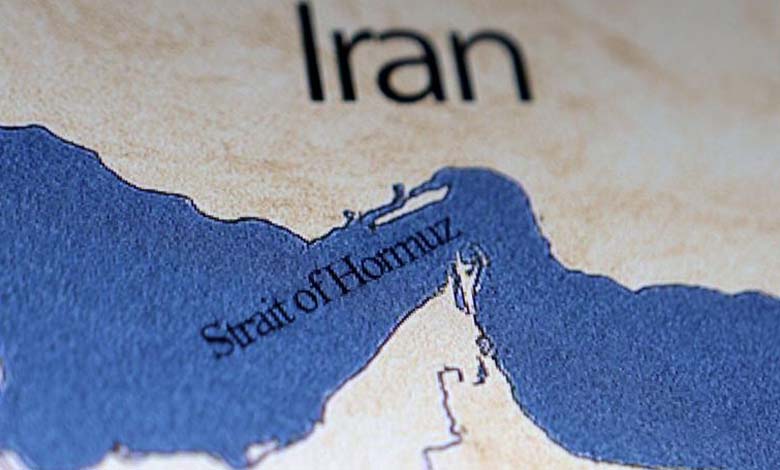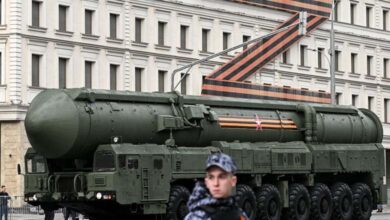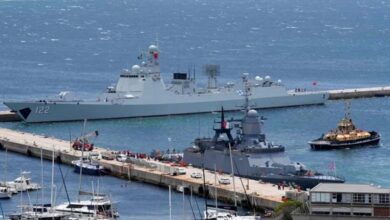Washington Reveals Iranian Plan to Close Strait of Hormuz During War with Israel

Two U.S. officials confirmed that American intelligence had uncovered Iranian preparations to close the Strait of Hormuz using naval mines, following Israel’s initial missile attack on Iran on June 13.
-
Nuclear Talks: Iran Rejects Washington’s Proposal and Prepares an Alternative
-
Khamenei, Iran’s Illness and the Obstacle to Any Agreement with Washington
According to the two officials, who spoke on condition of anonymity, the Iranian military loaded naval mines onto vessels in the Gulf last month — a move that heightened Washington’s concerns about Tehran’s readiness to block the strait in response to Israeli strikes on sites across Iran.
These previously unreported preparations were discovered by U.S. intelligence after the conflict had begun. The act of loading the mines — even though they were not deployed — suggests Iran may have seriously considered shutting one of the world’s busiest maritime chokepoints, a move that would have escalated the conflict and severely disrupted global trade.
-
Washington Tests Military Capabilities Amid Escalation Between Israel and Iran
-
Washington rules out Iran and its proxies’ involvement in expanding the war
Roughly one-fifth of the world’s oil and gas shipments pass through the Strait of Hormuz. Any closure could cause a sharp spike in global energy prices.
However, oil prices have dropped more than 10 percent since U.S. strikes on Iranian nuclear facilities, partly due to market relief that the conflict had not severely disrupted crude trade.
On June 22, shortly after the U.S. bombed three major Iranian nuclear sites in an effort to cripple Tehran’s program, reports indicated that the Iranian Parliament supported a proposal to shut the strait. The move, however, was non-binding, and the final decision was left to Iran’s Supreme National Security Council, according to Press TV. Iran had threatened such action before but never followed through.
-
Washington sends messages to Iran and Hezbollah via Turkey… Details
-
Washington Imposes New Sanctions on Iranian Individuals and Entities… What’s New?
It remains unclear when exactly the mines were loaded during the aerial conflict between Israel and Iran. Had they been deployed, the mines could have blocked navigation through Hormuz. It is also unknown whether the mines have since been removed.
The sources did not disclose how the U.S. determined that the mines had been loaded onto Iranian ships, but such intelligence is typically gathered through satellite imagery, human sources, or a combination of both.
-
Washington doubts the seriousness of forming a naval alliance comprising Iran and Gulf states
-
Trump Denies Seeking to Fund Iran’s Civil Nuclear Project
A White House official, asked about Iran’s preparations, stated: “Thanks to the president’s skillful execution of Operation Midnight Hammer, the successful campaign against the Houthis, and the maximum pressure strategy, the Strait of Hormuz remains open, freedom of navigation has been restored, and Iran has been significantly weakened.”
The officials added that the U.S. government had not ruled out the possibility that the mine-loading operation was a bluff. The Iranians may have staged the move to convince Washington of their seriousness, without actually intending to close the strait. The Iranian military may also have simply been preparing in case its leadership gave the order.
-
In a Letter to the Security Council.. The U.S. Justifies Strikes on Iran with Three Objectives
-
Pekaks: The Mountain Hiding Iran’s Nuclear Bomb
The Strait of Hormuz, located between Oman and Iran, connects the Persian Gulf with the Gulf of Oman and the Arabian Sea. At its narrowest point, the strait is 34 kilometers wide, with a shipping channel only two nautical miles wide in each direction.
Saudi Arabia, the UAE, Kuwait, and Iraq — all OPEC members — export most of their oil through the strait, primarily to Asia. Qatar, one of the largest exporters of liquefied natural gas, sends nearly all of its LNG through Hormuz.
-
Washington denies transfer of Iranian enriched uranium before U.S. strike
-
Trump Administration Defends Strikes on Iran as Leaked Report Puts Success Under the Microscope
Iran also exports most of its oil via the strait, which theoretically limits its incentive to close it. Nevertheless, Tehran has heavily invested in the ability to do so if deemed necessary.
A 2019 report from the U.S. Defense Intelligence Agency estimated that Iran possesses over 5,000 naval mines, which could be quickly deployed using fast small boats.
The U.S. Navy’s Fifth Fleet, based in Bahrain, is responsible for ensuring the security of maritime trade in the region. The Navy typically maintains four mine countermeasure vessels stationed there.
-
Iran Faces the Battle Alone… Where Have Its Proxies Gone?
-
Sources Reveal Shocking Pentagon Intelligence Report on Iran’s Nuclear Program
All mine-hunting ships were temporarily withdrawn from Bahrain in the days leading up to the U.S. strikes on Iran, anticipating potential retaliation against the fleet’s headquarters.
Iran’s immediate response was limited to a missile strike on a U.S. military base in Qatar. However, American officials have not ruled out the possibility of further Iranian retaliation.












